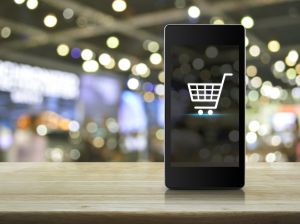“If you think education is expensive — try ignorance”. — Derek Bok, president of Harvard University.
User training is one of the puzzle’s pieces which allows you to create a complete picture of a successful implementation project. Attention should be paid to end-user training in the case of implementing such IT systems as ECM (Enterprise Content Management), which will be used by many employees.
 No less important is the training of ERP and CRM users, because they are aimed at solving complex business problems. Whether an implemented IT system or business application becomes a productive and useful tool for a company, directly depends on the well-organized training for end users.
No less important is the training of ERP and CRM users, because they are aimed at solving complex business problems. Whether an implemented IT system or business application becomes a productive and useful tool for a company, directly depends on the well-organized training for end users.
In this article, we will look at end-user training in terms of process organization.
We will examine a different kind of ways to organize end-user training on implementation projects, limitations, advantages, and disadvantages of each approach, as well as our experience in applying some of these methods on IT implementation projects.
These days, the most popular methods of organizing end-user training are:
- small group training in a computer lab;
- face-to-face workshops;
- webinar seminars;
- training videos integrated into the system;
- e-Learning.
Let’s review each method for various parameters: the number of users, the effectiveness of training, training schedule, complexity and cost.
Small groups user training in the computer class
 This training method is optimal for organizations where the number of users working constantly with the new system is limited to several tens. The method is most effective in terms of the quality of education. Computer room user training is also recommended if the majority of employees do not have practical experience in using the automation systems. In this case, it is recommended to conduct full-time training with practical exercises. Based on our experience, such a format is most often used to educate a workgroup first.
This training method is optimal for organizations where the number of users working constantly with the new system is limited to several tens. The method is most effective in terms of the quality of education. Computer room user training is also recommended if the majority of employees do not have practical experience in using the automation systems. In this case, it is recommended to conduct full-time training with practical exercises. Based on our experience, such a format is most often used to educate a workgroup first.
Advantages |
Disadvantages |
| · Possibility to present material in greater volume or with more detail
· A more guaranteed result from training · Animated dialogue with the teacher, possibility to ask questions · Opportunity to get practical skills |
· A limited number of users at once
· The high cost of training per participant · The duration of training due to the combination of theory and practice
|
Full-time seminars for users
 This method is optimal for organizations with 100-200 users (it could be in case of ECM implementation). This training method is less effective than the previous one, but at the same time, it retains the ability to ask questions and get answers to them in real time. It is recommended to make a video recording of the training seminar, so in the future, end-users can refer to it and refresh their knowledge.
This method is optimal for organizations with 100-200 users (it could be in case of ECM implementation). This training method is less effective than the previous one, but at the same time, it retains the ability to ask questions and get answers to them in real time. It is recommended to make a video recording of the training seminar, so in the future, end-users can refer to it and refresh their knowledge.
From our personal experience of using face-to-face seminars, we can recommend combining such training with detailed user instructions (both for the business process and for distribution by roles). It is also necessary to provide resources for the organization of the first line of user support at the stage of pilot production.
Advantages |
Disadvantages |
| · Ability to reach a significant number of users
· Low cost of training per user · Short term training · The possibility of dialogue with the teacher, the opportunity to ask questions, clarify |
· The material is presented in theoretical form, there is no possibility of practical use of the system (it is impossible to “touch” during the training session)
· Training material is limited, most often gives a general idea of the work in the system. |
Webinar user-training workshops
 Webinar end-users training is optimal for companies where the number of users is several hundred and more and/or employees are geographically detached.
Webinar end-users training is optimal for companies where the number of users is several hundred and more and/or employees are geographically detached.
From our experience of conducting webinars, I would like to draw attention to the following points: webinars are devoid of “eye contact,” the teacher is hard to get feedback from the audience in real time. However, if users are employees who already have experience in automation systems, such a format is quite viable.
Advantages |
Disadvantages |
| · Capacity to reach a significant number of users
· The ability to train users without leaving the workplace (for example, employees of company branches in different cities) · Low cost of training per user |
· The material is presented in theoretical form, there is no possibility to practice during the webinar
· Training is limited, often gives general information of the work in the system. · The risk of technical problems |
Training videos embedded in the IT system
 This method also has no restrictions on the number of end-user and the time of training. Training videos demonstrate the standard functionality of the system, without taking into account any additional modifications for a specific customer. Therefore, it can be recommended to those companies whose business processes fit into the standard functionality of the system or have been adapted to the system.
This method also has no restrictions on the number of end-user and the time of training. Training videos demonstrate the standard functionality of the system, without taking into account any additional modifications for a specific customer. Therefore, it can be recommended to those companies whose business processes fit into the standard functionality of the system or have been adapted to the system.
Watching videos does not replace full-training and is recommended as an addition to other formats of user training.
Advantages |
Disadvantages |
| · No need to specifically organize end-user training. Any user can refer to the training material at any time.
· No additional financial investments |
· Videos provide the ability to view a demonstration of the functional, but there is no way to perform any practical tasks. (Is not recommended to train in the “live” system)
· They describe the standard functionality, do not take into account the customizing system for a specific customer. |
Online Learning Tools (e-Learning)
 The use of online learning tools (for example, based on SAP Enable Now, Oracle Learning, DoceboLMS, etc.) is recommended for large organizations with a large number of users working in the system, including employees who working from home-office. Users can independently allocate time to complete these courses, and then refer to them if necessary when performing their daily duties.
The use of online learning tools (for example, based on SAP Enable Now, Oracle Learning, DoceboLMS, etc.) is recommended for large organizations with a large number of users working in the system, including employees who working from home-office. Users can independently allocate time to complete these courses, and then refer to them if necessary when performing their daily duties.
In terms of efficiency, the method is comparable to training in a computer class, because a user can test his knowledge’s in a practical task.
Advantages |
Disadvantages |
| · No need to specifically organize training, users at any time can refer to the training material.
· No need a large number of employees to provide first-line user support · The opportunity to get theoretical knowledge and still see a demonstration of certain actions in the system and reproduce them in a practical unit. |
· The high cost of distance learning tools.
· There is no possibility for live-dialogue with the teacher, for asking questions
|
If you want to learn more about user training, please read other materials:
- User Training: The Key to Unlocking the Benefits of a Software System
- The importance of User Training during software implementation
- How A Proper End User Training Can Improve Performance After A New Software Implementation
- Why software upgrades in companies can cause panic and fear
We, as Software Provider, truly understand how important it is to organize user training for employees. It is necessary to pay attention to users’ needs, and not only to the system being implemented. Investment in employees training will allow enterprises to quickly get the benefits that the new IT system provides.

 Many businesses, without a proper business continuity and disaster recovery plan and solution, don’t recover from some disasters. So, before you think to yourself, “well we have beautiful weather here or we hardly ever get power outages, why should I pay for a Business Continuity Service?” – remember that your company is much more likely of falling victim to a ransomware attack, having an employee accidentally delete an important file or dealing with a malfunctioning server. No matter what sudden disastrous event occurs, you want to be protected. Ask yourself, is my company’s data worth risking? You may have gone the last 10 years disaster-free but can you truly guarantee that the next 10 years will also be free of crisis?
Many businesses, without a proper business continuity and disaster recovery plan and solution, don’t recover from some disasters. So, before you think to yourself, “well we have beautiful weather here or we hardly ever get power outages, why should I pay for a Business Continuity Service?” – remember that your company is much more likely of falling victim to a ransomware attack, having an employee accidentally delete an important file or dealing with a malfunctioning server. No matter what sudden disastrous event occurs, you want to be protected. Ask yourself, is my company’s data worth risking? You may have gone the last 10 years disaster-free but can you truly guarantee that the next 10 years will also be free of crisis? We all keep hearing about
We all keep hearing about  QBR
QBR
 During the years of experience in software implementation, we have met business leaders that have various points of view on the use of IT technology such as ERP system, CRM software, as well as software implementation and software Integration in general. Perhaps you recognize yourself as one who:
During the years of experience in software implementation, we have met business leaders that have various points of view on the use of IT technology such as ERP system, CRM software, as well as software implementation and software Integration in general. Perhaps you recognize yourself as one who:
 Investing in
Investing in  Source:
Source: 
 In my opinion, the above statistics, reflecting e-commerce product returns, seem frightening. Is it possible to reduce the above percentages? Can your online business avoid these mistakes?
In my opinion, the above statistics, reflecting e-commerce product returns, seem frightening. Is it possible to reduce the above percentages? Can your online business avoid these mistakes? For e-commerce, up-to-date information on the availability of goods is very important. That’s why one of the main EDI requirements for
For e-commerce, up-to-date information on the availability of goods is very important. That’s why one of the main EDI requirements for 


